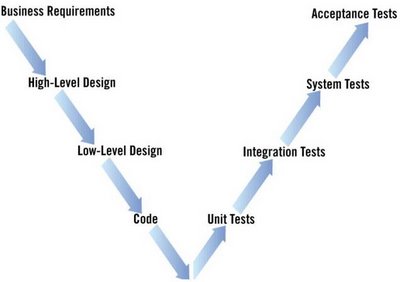Software Life Cycle Models
Posted On 05 December, 2008 at 12:08 PM by Rajeev Prabhakaran1. Prototyping Model of Software Development
A prototype is a toy implementation of a system; usually exhibiting limited functional capabilities, low reliability, and inefficient performance. There are several reasons for developing a prototype. An important purpose is to illustrate the input data formats, messages, reports and the interactive dialogs to the customer. This a valuable mechanism for gaining better understanding of the customer’s needs. Another important use of the prototyping model is that it helps critically examine the technical issues associated with the product development
2. Classic Waterfall Model
In a typical model, a project begins with feasibility analysis. On successfully demonstrating the feasibility of a project, the requirements analysis and project planning begins. The design starts after the requirements analysis is complete, and coding begins after the design is complete. Once the programming is completed, the code is integrated and testing is done. On successful completion of testing, the System is installed. After this, the regular operation and maintenance of the system takes place
3. Spiral Model
Developed by Barry Boehm in 1988. it provides the potential for rapid development of incremental versions of the software. In the spiral model, software is developed in a series of incremental releases. During early iterations , the incremental release might be a paper model or prototype Each iteration consists of Planning, Risk Analysis, Engineering, Construction & Release & Customer Evaluation
Customer Communication
Tasks required to establish effective communication between developer and customer
Planning
Tasks required to define resources, timeliness, and other project related information.
Risk Analysis
Tasks required to assess both technical and management risks.
Engineering
Tasks required to build one or more representatives of the application.
Construction & Release
(Tasks required to construct, test, install and provide user support e.g., documentation and training)
Customer Evaluation
Tasks required to obtain customer feedback based on evaluation of the software representations created during the engineering stage and implemented during the installation state
4. V-Model



